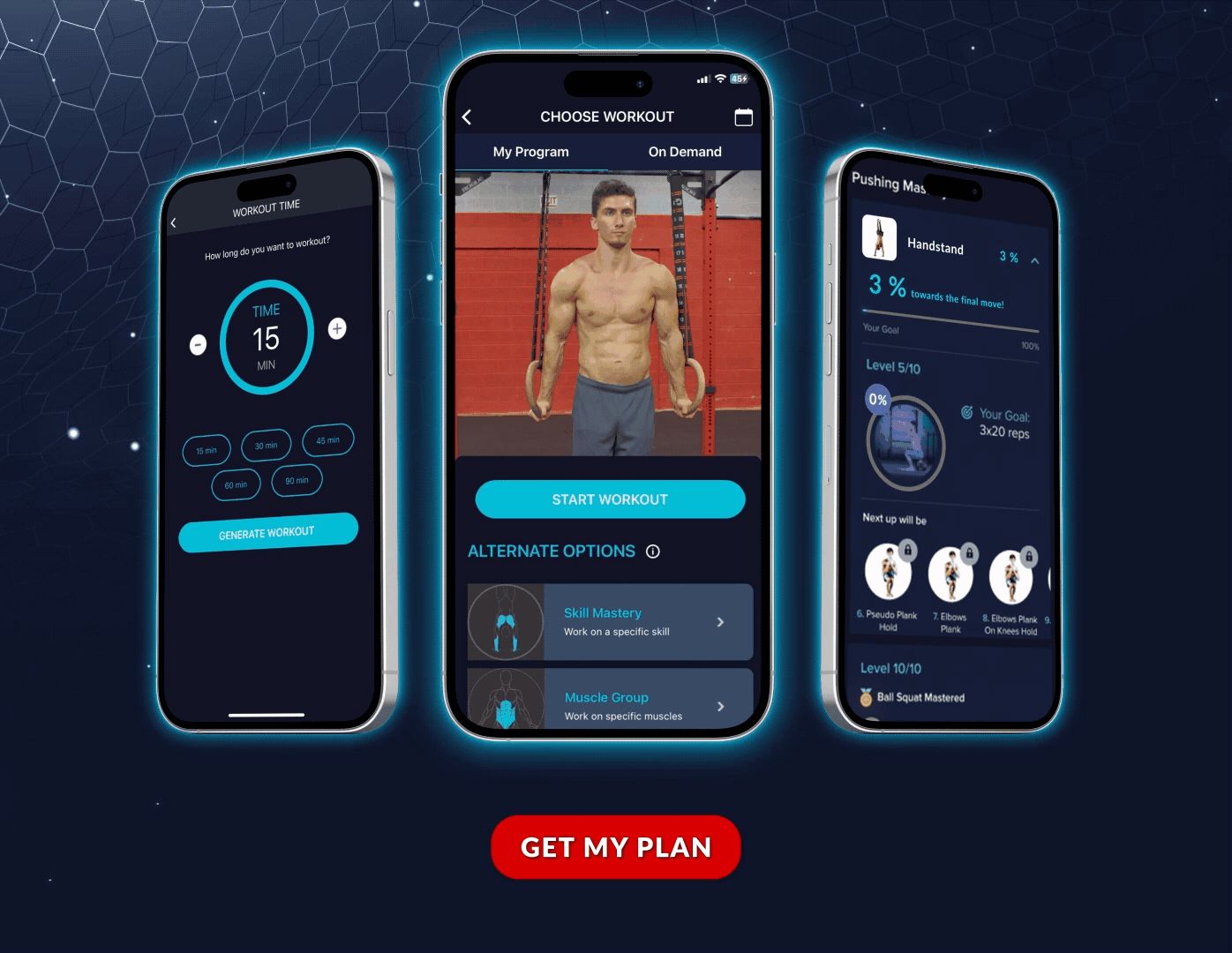
📖 Read Time: 4 Minutes
🏋️ Join the tribe of Movement & Calisthenics Athletes
People just like you that are working with their own body weight to get strength, lose fat, build muscle, recover from injuries and live their best lives!
What is a progression?
It is one step within a series of exercises aimed at learning a specific movement.
What is The Structure Of Progressions in The Movement Athlete?
Each exercise in the program has a mastery number of sets and reps, once achieved you will “unlock” the next, slightly more challenging exercise.
Why are they effective?
Progressions prepare you both physically and mentally for the task at hand. In The Movement Athlete, our progressions focus on developing the necessary mobility, kinesthetic awareness, and strength to learn each and every movement. 💪
They were created with a strong focus on technique so that each movement can be learned safely, and efficiently.
Why is technique important?
Technique emphasizes using the muscle groups in a way that promotes the overall health and wellbeing of your body. Strong technique will help you to avoid strains and overuse injuries by teaching you how to place the load of a movement on the muscles that are best equipped to handle it. 🎯
Strength, mobility, and technique are the three most important pieces of the injury prevention puzzle.
Technique For Future Learning
A technically sound skill sets the framework for infinite possibilities to learn all sorts of variations and advanced movements. 🚀
For example, if you learn a handstand with a really nice body line, you will very quickly be able to learn to balance, walk, and even pirouette. If you learn a handstand with an arch in your back when you approach walking or pirouetting it will be nearly impossible for you to keep balanced.
The Importance of Progressions in Calisthenics
Continuous challenge leads to continuous growth. In other sorts of exercise such as weightlifting, when a weight becomes easy to lift, you add more weight, and in this process, your strength continues to grow. 📈
Weight in pure calisthenics is always fixed, so when an exercise becomes easy the way to growth is to move on to a more challenging one.
Not sure where to start with your calisthenics journey? Take our free assessment to get a personalized training plan based on your current fitness level!
Example
The One Arm Pushup (Insert Beast Mode) requires insane core and body stability. It uses the pectorals, front deltoids, and triceps but the real key is in learning to stabilize your core so that you can control your rotation and generate movement from the shoulder. 💪
Seems like a lot of moving pieces, right? Check out this breakdown:

💡 Key Takeaway: Progressions + Increasing reps and sets = Strength Gains and Endless Possibilities for Growth
Related Articles You’ll Love:
Ready to get started?
Get your free personalized training plan now
